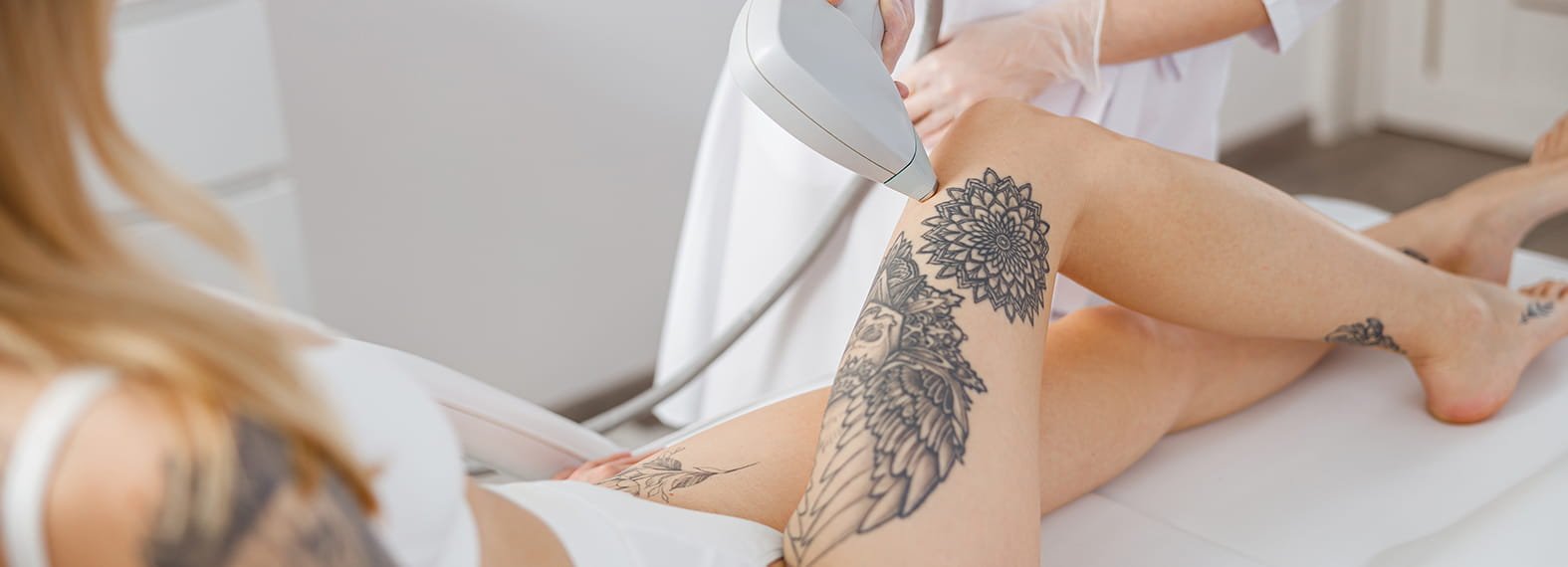Laser Tattoo Removal in Abu Dhabi is one of the most popular and effective methods for removing unwanted tattoos. It uses advanced technology to break down the ink particles beneath the skin, allowing the body to naturally eliminate them. In Abu Dhabi, where access to state-of-the-art medical technology is available, many individuals seek Laser Tattoo Removal in Abu Dhabi to erase tattoos they no longer want. If you’re considering this procedure, it’s important to know what to expect after Laser Tattoo Removal in Abu Dhabi to ensure a smooth recovery and optimal results.
The Laser Tattoo Removal Process
Before diving into what you can expect after the procedure, it’s useful to understand how laser tattoo removal works. During the treatment, a high-powered laser is used to target the tattoo ink beneath the skin’s surface. The laser emits intense light pulses that break down the ink particles into smaller fragments. These fragments are then gradually absorbed and eliminated by the body’s immune system over time.
Multiple sessions are often required, depending on the size, color, and depth of the tattoo, as well as individual skin characteristics. Each session typically lasts between 10 to 30 minutes, and the treatments are spaced several weeks apart to allow your skin to heal and for the body to process the broken-down ink particles.
What to Expect Immediately After Laser Tattoo Removal
Once your laser tattoo removal session is complete, there are a few things you may experience as part of the normal healing process:
1. Redness and Swelling
It’s common to experience redness and swelling around the treated area after the procedure. The intensity of the redness and swelling will vary depending on the size and location of the tattoo, as well as the individual’s skin sensitivity. This is a normal reaction and should subside within a few hours to a few days. You may notice that your skin feels slightly warm to the touch, similar to the sensation of a mild sunburn.
2. Skin Sensitivity
The treated area will likely be sensitive to touch immediately after the session. Your skin may feel tender or sore, but this should gradually fade as the healing process progresses. If necessary, over-the-counter pain relief can be used to manage any discomfort. Be gentle with the area and avoid excessive pressure or rubbing.
3. Blistering
In some cases, you may experience blistering after the treatment. These blisters form as a natural part of the healing process and are generally small. It’s essential not to pop or pick at the blisters, as doing so can lead to infection or scarring. If blisters do form, follow the aftercare instructions provided by your practitioner to care for the area and allow the skin to heal.
4. White or Frosted Appearance
Directly after the treatment, the skin may appear white or frosted due to the laser’s impact on the tattoo ink. This is a temporary effect and should fade within a few hours. It’s a sign that the laser treatment has effectively broken down the ink particles.
5. Pain and Discomfort
The sensation during and after laser tattoo removal can vary. Some individuals report feeling a stinging or snapping sensation during the procedure, similar to the feeling of a rubber band being snapped against the skin. After the procedure, mild discomfort or aching may persist for a short time. This discomfort is typically manageable and should dissipate within a few days.
The Healing Process After Laser Tattoo Removal
The healing process after laser tattoo removal varies from person to person but generally follows a predictable pattern. Here’s what you can expect as your skin heals:
1. Scabbing and Peeling
Over the next several days following the procedure, you may notice the skin begin to scab or peel. This is a natural part of the healing process as the body works to remove the broken-down ink particles. It’s crucial not to pick at the scabs or peeling skin, as this can interfere with the healing process and increase the risk of scarring.
2. Skin Flaking
Flaking is another common occurrence during the healing process. As the tattoo ink is absorbed and the skin sheds dead cells, you may notice tiny bits of skin flaking off. This can happen for up to a week or two after the treatment. This is entirely normal and a sign that the skin is regenerating.
3. Gradual Fading of the Tattoo
One of the most exciting aspects of laser tattoo removal is seeing the tattoo gradually fade. As your body processes the broken-down ink particles, the tattoo will begin to lighten. It typically takes multiple sessions for the tattoo to be fully removed, and the fading process occurs over the course of weeks or months after each session.
4. Improved Skin Texture
While it’s not always immediate, the treated area will eventually heal with a smoother and more even texture. Most individuals will notice that their skin looks better over time as the tattoo fades and the skin regenerates. However, keep in mind that the final results can take several months to fully manifest, especially for larger or more intricate tattoos.
Aftercare Tips for Laser Tattoo Removal
Proper aftercare is crucial to achieving the best results and minimizing complications. Here are some key aftercare tips to follow:
1. Keep the Area Clean and Moisturized
For the first few days following your laser tattoo removal session, it’s important to keep the treated area clean. Gently wash the area with mild soap and water, and pat it dry with a clean towel. You may also apply a thin layer of antibiotic ointment or healing cream, as recommended by your practitioner, to keep the skin moisturized and prevent infection.
2. Avoid Scratching or Picking
It can be tempting to scratch or pick at the treated area, especially if blisters or scabs form. However, it’s essential to resist this urge to avoid scarring and infection. Let the skin heal naturally, and allow the scabs or peeling skin to fall off on their own.
3. Protect the Area from Sun Exposure
Direct sun exposure can increase the risk of pigmentation changes and scarring. Make sure to protect the treated area from the sun by wearing sunscreen with a high SPF or covering it with clothing if you need to go outside. Sun protection is important throughout the entire healing process, which can take several weeks to months.
4. Avoid Intense Physical Activity
For the first few days after your laser tattoo removal session, it’s advisable to avoid intense physical activity, especially exercises that cause heavy sweating. Sweating can irritate the treated area and prolong the healing process. It’s best to keep your activities low-impact during the initial recovery period.
5. Follow Up with Your Specialist
It’s important to follow up with your laser tattoo removal specialist as recommended to ensure that the treatment is progressing as expected. Your specialist may recommend additional sessions based on the size and depth of the tattoo, and regular check-ins can help ensure the treatment is effective.
When Can You Expect Final Results?
Laser tattoo removal is a gradual process, and it can take several months to see the final results. Depending on factors such as the type of ink used, the size and color of the tattoo, and your skin’s healing ability, it can take anywhere from 6 to 12 sessions to completely remove the tattoo. The treatments are spaced out every 6 to 8 weeks to allow your skin to heal and for the body to process the ink.
It’s important to be patient and allow enough time between treatments for your skin to recover. Although some tattoos fade after just one or two sessions, complete removal usually requires a series of treatments.
Why Choose Laser Tattoo Removal in Abu Dhabi?
Abu Dhabi is home to advanced clinics offering cutting-edge laser technology for tattoo removal. The city’s dermatologists and laser specialists are highly trained and experienced, providing safe and effective treatments. With state-of-the-art equipment, professional aftercare, and skilled practitioners, Abu Dhabi offers an excellent option for anyone considering laser tattoo removal.
Conclusion
Laser tattoo removal in Abu Dhabi is an effective and safe solution for erasing unwanted tattoos. While the procedure itself is relatively quick, the post-treatment recovery and fading process take time. Expect some redness, swelling, blistering, and scabbing immediately after the treatment, followed by gradual healing, skin regeneration, and tattoo fading. By following proper aftercare instructions and attending follow-up sessions, you can achieve clear, tattoo-free skin.



